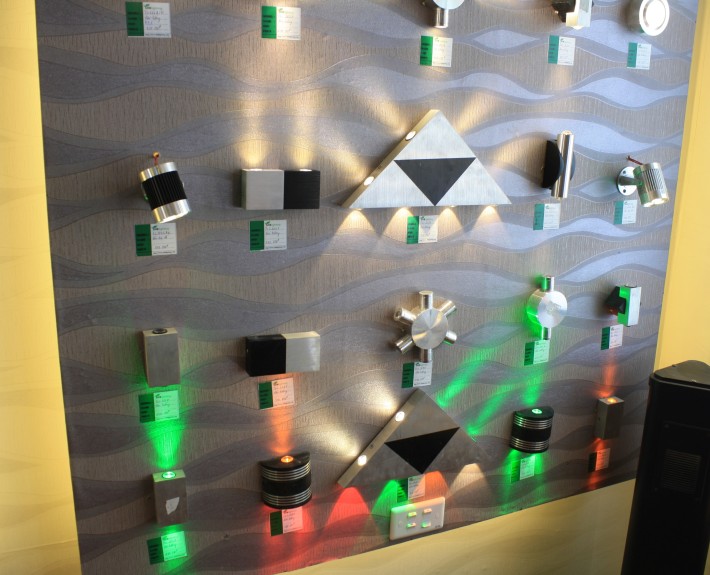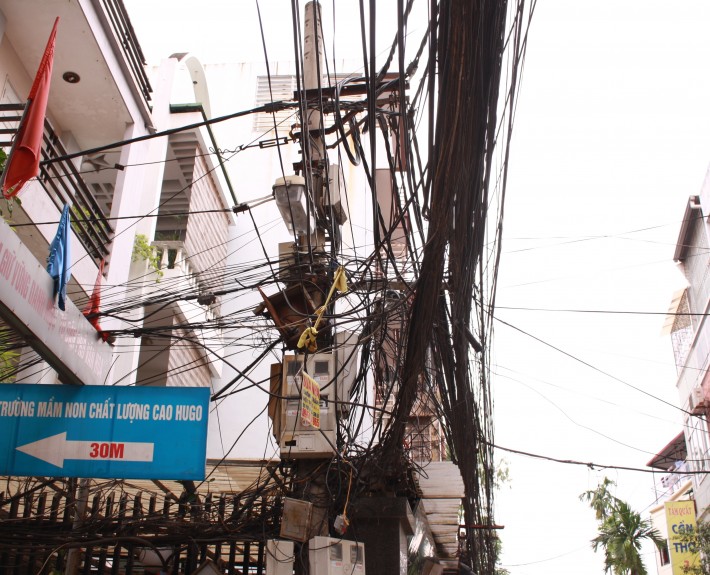First Mekong Entrepreneurship EcoSystem Summit
From June 11-13, entrepreneurs, ecosystem builders, and explorers from Cambodia, Laos, Myanmar, Thailand, and Vietnam came to Ho Chi Minh City, Vietnam to connect, build bridges, and compete for $20,000 to fund their initiatives during the first Mekong Entrepreneurship Ecosystem Summit, organized by the Centre of Business Studies and Assistance (BSA) and DHVP research as part of the TIGERS@Mekong public-private alliance.
TIGERS@Mekong (Technology Innovation Generation and Entrepreneurship Resources) is a consortium of country and region-specific partners. As found on the TIGERS@Mekong site:
“The U.S. Department of State launched the Mekong Technology Innovation Generation and Entrepreneurship Resources (TIGERS@Mekong) as a flagship project under the Connect Mekong framework at the East Asia Summit in 2012.”
Of the participant countries from the Lower Mekong, they are at different stages of market development and interest despite encompassing more than 230 million people in the region. The two shining stars, Thailand and Vietnam, currently have a lot of interest from venture capitalists and have almost 160 million people between them. Vietnam also has a lot of interest from foreign investors as the TPP is expected to pass soon. Laos and Cambodia are still largely developing and share approximately 22 million people between them; Cambodia, and especially Laos, have a lot of room to grow. And Myanmar (population north of 50 million), although “open for business” since 2011, has largely elicited a “wait-and-see” approach from foreign investors and their representative offices. There are elections later this year, so perhaps things will be different after. Already in the region, there is the Mekong Business Challenge, which has entered its 10th year so there is already some sort of dialogue in place and deepening it will only positively impact the region and its inhabitant.
So while it was good to bring the countries together, it’s also necessary to recognize that each country has its own strengths and weaknesses, and market opportunities. Thus, a tour through each country (perhaps a two-week Bootcamp to cover a topic) in a graduated fashion would allow participants to learn new skills, but also learn more about the countries in the region, and also establish a wider network. Myanmar, Laos, Cambodia, Vietnam, and Thailand could be a suitable 10-week path in the form of topics such as Ideation, Market Research, Concept Refinement, Prototyping, and Pivoting (if/when necessary).
The Pitches
Below, are some of the top 10 pitches for new initiatives which were presented at the summit (in their entirety, as described by those who pitched).
“LAUNCH PAD
The main reason of failure of tech startups in the region is the serious lack of VISION and KNOWLEDGE about the market, players and customers. And the 2nd main reason is, once they have built first versions of products or services, they don’t have a proper way to LAUNCH and TEST their business.
With these 2 reasons, I believe that we must build a LAUNCH Platform for all tech startups in the region to:
- join, see and learn what other tech startups are doing in the region (Eye-Open). This helps them a better VISION what should do.
- Test their products before launching, get feedbacks from peers. And
- Find partners from other countries for EXPANSION when they grow
CROWD FACTORY
CrowdFactory consists of three main parts: CrowdPitch, CrowdCoach and CrowdData.
CrowdPitch is an event that helps startups have a chance to practice their pitching to a live audience. There are multiple events every year (depending on each local landscape) and each event has 4 startups that pitch. Audience pays for a ticket to attend and 75% of their ticket money goes straight to their favorite startup. That means it’s an offline crowdfunding event. CrowdCoach is CrowdPitch’s sister event. The number one winner of CrowdPitch gets to attend CrowdCoach, where for two hours, the startup gets to interact directly with four mentors, who give private and in-depth feedback to the startup. All of this is supported by CrowdData, as the local organizers collect new startups and mentors, they slowly collect data on the ecosystem, supporting the cycle of events under CrowdFactory.
Mekong Startup Training for Trainer
The program trains startups on necessary skills needed such as sales and marketing skills, users experience, digital marketing, tech skills and so on. In order to complete the program, the group of trainees need to train other startups. For those outstanding ones, will be going to train startups in other countries.
By doing this, startups in each country will meet and they will then share the business and investment information of their own country and build there networks.
This program will help ensure the wellbeing and to strengthen the networks of our Mekong region startups ecosystems.
Mekong Startup Weekcamp
The IDEA behind his concept is about
– – engagement between potential Tech-Startups and Business Start-ups to share of their skills and expertise each other.
– – networking among key players in local and regional
al The event will take 4 day long at National Event and basically the following activities will include and can adapt as per local needs.
– Selection Process to Potential Entrepreneurs (Potential Tech and Business Start-ups) to enter Training Session
Activities are:
– National Start-up Weekcamp Training (2 days)
– Industry Experts /Founders’ Talk – Experiential Sharing (1 day) “Regional Founders or Experts will be invited” (1 day)
– IDEA Showcase and Feedback from Regional Founders/ Experts and award ceremony at Networking Night (1 day)
Along with IDEA Showcase, local Business and Start-ups booths will be exhibited by regional Start-ups (to meet with the regional accelerators/investors from the country and from the region)
We can adapt the activities as per local needs and can leverage this concept to local and regional areas.
Coenlight
Coenlight is an innovative educational platform for effective skills-based learning and with the mission to create an edu-lab that incubates intellectual potential. This platform is a grassroots initiative tailored to the Cambodian and ASEAN context. We are driven by a strong social mission to revolutionize Cambodia’s and ASEAN’s education ecosystem based on our unique strengths. At Coenlight, we believe that any passionate skilled individual can develop into an extraordinary instructor. We seek to challenge the existing paradigm that becoming a teacher is a static threshold to pass over and uphold that learning is a life-long process.
Our Model:
1) Train individuals to translate their skills into innovative courses.
2) Match passionate instructors with motivated students.
3) Build an ecosystem that fosters critical thinking, skill building, and mentorship.
4) Empower the most talented students to “pay their learning forward” by becoming Coenlight instructors.
Wicked Problems Worth Working On…
Many times we get stuck into thinking about market size and we filter out everything except our customers (whoever we think they might be). However, Southeast Asia has a number of major challenges common to almost everyone in the region: disparity between rich and poor, gaps in the education system, rural poor, corruption, energy, water issues… These are major challenges which are bigger than any single country, and they represent big opportunities for impact entrepreneurs and impact investors who can craft the right solutions.
If we could only put together a list of the Wicked Problems, clearly defined, focused, and yet still significant, we could encourage players in the ecosystem to galvanize around one or more of them, to run themed boot camps, provide seed grants, compete in themed business plan competitions, and encourage funding from industry players.
This project asks for initial funding to help find a methodology to develop this list of Wicked Problems. Tapping into the expertise and connections of government agencies like USAid and other aid organizations there must be people (academics? NGOs? or…?) who have developed a suitable methodology that could be used to seek out, define, and get support for a good list of Wicked Problems for Southeast Asia. How do we find out what has already been done, what can be borrowed or co-opted for our purposes, and how could we implement it?
CrowdHelping
We want to build an online platform that transforms the way small scale local social entrepreneurs get access to funds, by crowdsourcing bureaucratic grant proposal writing to volunteers.
Picture a small scale social entrepreneur operating in rural Myanmar. She has intimate local knowledge, she know what kinds of ventures will have the most positive impact on her community, she is already bootstrapping her idea to build a social enterprise. All she needs is access to a small grant to push her idea to the next level.
Now picture a charitable organisation, an impact investor, or an aid agency sitting in an office in Yangon. They have money that they want to give away to people exactly like our social entrepreneur.
What stands between them? Bureaucracy.
Our social entrepreneur only speaks her regional language, she cannot write a 4 page proposal, she doesn’t understand the forms she has to fill out to qualify for grants. However, she does have a smartphone.
. How does it work?
- Social entrepreneurs simply shoot a short video of themselves pitching their idea in their local language, posts it on their profile on our platform
- A network of seasoned mentors who have close connections with local NGOs and social enterprises will vet the ideas that social entrepreneurs post, in order to create trust.
- Volunteers who have successfully applied for grants and know how to write proposals to apply for grants will browse the pitches of social entrepreneurs posted on the platform. Through the mentors vetting process, the volunteers will know which of the pitches are made by trustworthy entrepreneurs.
- Once the volunteer sees a pitch she likes, she will help fill out forms, write proposals and help submit them to organisations that can give out small grants
We want to replace bureaucracy with a trust network. It’s AirBnB for access to grants.”
Going Forward
The winners were Agri-Tigers, Mekong’s Next Top Mentor, and Crowdpitch but it would be great if the organizers could host all the pitch decks online for interested parties to view and perhaps develop. Across the board, technology and entrepreneurial leaders want to inspire venture building, boost the entrepreneurial capabilities of young people, and garner a stronger entrepreneurial spirit overall. In part, it will require a mindset shift, a way of not only thinking differently, but acting differently as well.
Last weekend’s event in Ho Chi Minh City was an opportunity for those on the frontline of building and shaping ecosystems to share ideas, failures, and successes with each other—and also garner support for new initiatives. In all, it was good step toward connecting key individuals and organizations in the region in a cohesive fashion and will hopefully lay down the groundwork for increased communication and cooperation in the region.







































































































